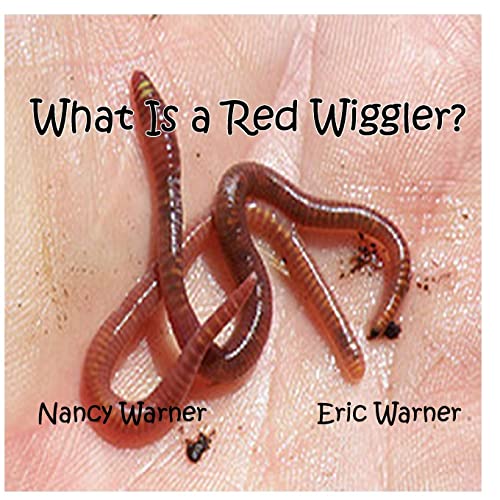Red Wiggler Express: Supporting Anglers with Trusted Worms
Red Wiggler Express: Supporting Anglers with Trusted Worms
Blog Article
The Extraordinary World of Red Wigglers: Boost Your Dirt Fertility Today
These tiny yet efficient microorganisms transform organic waste right into valuable worm spreadings, considerably boosting soil health and wellness and advertising sustainable methods. As we explore the benefits of vermicomposting and the sensible steps to produce a reliable worm bin, the possible influence of these worms on your gardening success comes to be increasingly obvious.
Recognizing Red Wigglers
Red wigglers, clinically known as Eisenia fetida, are a types of earthworm that play a vital role in improving dirt fertility. These worms flourish in organic-rich atmospheres, such as compost heap and decomposing plant product, where they consume organic waste and eliminate nutrient-dense spreadings. Their unique anatomy, featuring a fractional body and a clitellum, permits them to duplicate rapidly and efficiently process large amounts of raw material.

The environmental significance of red wigglers extends beyond plain waste processing; they add to the soil food internet, cultivating a diverse area of microorganisms that additionally boost dirt health and wellness. Recognizing the biology and habits of red wigglers is crucial for utilizing their complete potential in lasting farming and horticulture methods.
Benefits of Vermicomposting
(Lake Hickory Bait)Harnessing the power of red wigglers through vermicomposting offers various advantages that significantly improve dirt health and wellness and fertility. Among the main advantages is the production of nutrient-rich worm spreadings, which are a superb natural plant food. Red Wiggler Express. These castings include essential nutrients like nitrogen, phosphorus, and potassium, promoting robust plant development and improving plant returns
The visibility of worm spreadings enhances soil structure, enabling for far better water retention and drain. Red wigglers aid damage down natural matter, speeding up decay and recycling nutrients back into the dirt.
Vermicomposting additionally cultivates microbial task, which is essential for a healthy and balanced soil ecosystem. Beneficial microbes thrive in the presence of worm castings, helping in the malfunction of organic products and improving nutrition availability to plants.
Finally, vermicomposting acts as a reliable waste administration solution, lowering land fill waste by recycling kitchen area scraps and various other organic materials. This not only adds to ecological sustainability yet likewise promotes a round economy within gardening and agriculture.
How to Establish a Worm Container
Establishing a worm bin is a straightforward process that can dramatically enhance your composting initiatives. Begin by picking a proper container, which can range from a commercially readily available worm bin to a basic plastic or wooden box (Red Wiggler Express). Guarantee the container has appropriate air flow; tiny openings in the lid and sides will promote air blood circulation
Next, create a bed linen layer to give a comfy environment for the red wigglers. This can be made from shredded paper, cardboard, or coconut coir, dampened to a moist, sponge-like uniformity. Fill up the bin to around one-third complete with this bedding material.
Once the bedding is prepared, it's time to introduce the worms. Red wigglers thrive in natural waste, so place them gently onto the bedding. Cover the worms with a light layer of additional bedding to assist them accustom.
Feeding Your Red Wigglers
Offering the right food for your red wigglers is important for their health and wellness and the published here performance of your composting system. Red wigglers prosper on a diverse diet, mainly containing natural products such as vegetables and fruit scraps, coffee premises, and shredded paper. These materials not just offer important nutrients but also add to the microbial task in the worm container, which is essential for the worms' digestion.
It is necessary to stay clear of specific foods, such as dairy items, oils, and meats, as these can draw in pests and create undesirable smells. In addition, citrus peels and excessively spicy foods ought to be limited due to their potential to damage the worms. A well balanced strategy to feeding involves monitoring the amount of food introduced to the container, ensuring that it is taken in within a practical timespan to avoid excess waste build-up.
To promote ideal food digestion, it is useful to chop or shred larger food items prior to adding them to the container. This method increases the area for microbial action, assisting in quicker disintegration and enhancing the total performance of your composting system. Regularly observing the worms' feeding practices will certainly aid you readjust their diet regimen as necessary.
Utilizing Worm Spreadings in Your Garden

(Lake Rhodhiss Bait)Incorporating worm castings into your garden can be completed by mixing them into the dirt or utilizing them as a top dressing. The slow-release nature of these spreadings makes certain that nutrients are offered to plants over an extensive duration, lowering the demand for artificial plant foods. Additionally, worm spreadings have useful microorganisms that promote healthy soil communities, improving the total resilience of your garden.
To optimize the benefits, purpose to use roughly one component worm castings to three parts soil in your planting beds. Normal applications can result in improved crop yields and much healthier plants, making worm spreadings an indispensable source for both novice and seasoned gardeners alike. By using this natural change, you can cultivate a successful garden while adding to sustainable gardening techniques.
Conclusion
In conclusion, red wigglers exemplify the important function of vermicomposting in boosting dirt fertility. Their capacity to transform organic waste into nutrient-rich castings considerably enhances soil framework and sustains microbial variety.
Report this page